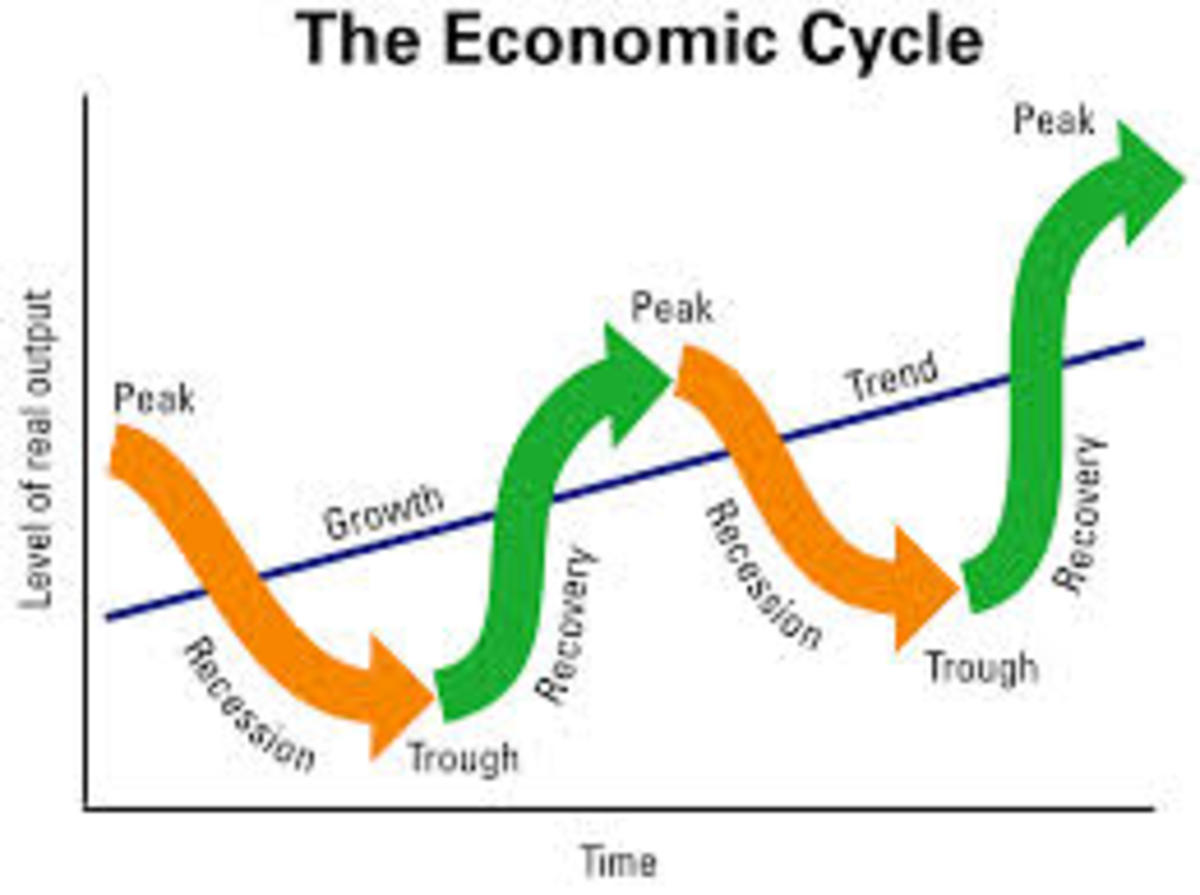Time Value of Money- Fundamentals of Finance


The value of a $ today is not same as the value of a $ tomorrow. In other words value of a $ received today is greater than the value of a $ received tomorrow. This is because money has what we call a ‘time value’.
What is time value of money?
In simple words it is the compensation receivable for the postponement of consumption of money.
Let me explain it through an example:
Suppose you have two choices before you
Choice 1: To receive $5000 today.
Choice 2: To receive $5000 one year after.
Which choice would you prefer?
Obviously you would prefer the choice 1. Why? It’s because if you have the option to enjoy the benefit of money today why would you postpone the enjoyment of its benefit to a year later. So it’s better to consume the money today than to consume it later.
But not always you want to consume the money today either because it is not practicable or it is not beneficial. You may want to:
- Save money for future.
- Lend it to someone.
- Invest it in stocks.
- Invest it in a business.
- Or postpone the consumption of money for some other purpose.
In the above cases you have deferred the benefit to consume the money to a future point of time. If you are a rational person you would not like to do it for free. You would like to demand a compensation for the postponement of consumption of money. It is rational to demand a compensation because of the following three reasons:
- Inflation: it may go up. A rise in inflation will decrease the purchasing power of money. for example, if inflation is 5% then you will have to pay $5250 to purchase a car a year later that you can purchase with $5000 now.
- Risk free rate of return: it’s the return that anybody can earn from the risk free investments. So it is natural that you would also like to earn the same amount of return from a risk less postponement of consumption of money. For example you deposit the money in a bank or in government bonds. In such cases you are almost certain to receive your money back. That means the default risk is very low. The borrowers would just like to compensate for your postponement of consumption of money by paying you interest etc.
- Risk: it means you are not certain about the payoff at the end of the period of investment. You may end up earning more than the risk free rate of return or you may end up even losing your initial investment value. It is the variability of actual payoff from the expected payoff.
What is your preferable mode of investment?

Quantifying the time value
We have seen above why money has a time value and how it depends on the three factors explained above. Now let us proceed to quantify the time value of money.
Time value of money = Expected inflation rate + Real rate of return on risk free investment + Risk premium.
Expected inflation rate: Compensation towards the fall in the purchasing power of money.
Real rate of return on risk free investment: Risk free rate of return – inflation rate. It’s the compensation over the inflation rate anyone can earn for the postponement of consumption of money without taking risk of losing money.
Risk premium: Return from a risky investment – risk free rate of return. It’s the extra premium over and above the risk free return for taking risk. It is decided by the returns provided by comparable investments which are subject to the same level of risk. It depends upon the perception of risk of each individual hence subjective. It’s because of this component time value of money is a variable. That is because of this component time value of money can be different for different individuals as regards to a same investment. Because of this different investments can have different time value of money for same individual.
How time value of money is helpful?
Suppose you receive $500 today, $1000 one year later and $3000 two year later. How much money you have received? Is it 500+1000+3000=4500? No, because the amount of money received or paid in different points of time are not comparable due to the time value of money. They are not expressed in terms of a specific year’s value of money. In such case, to make them comparable, you need to find out either the present value of money received (convert them into base year’s value) or the future value of money received (convert them into the terminal year’s value).
Compounding and discounting
in compounding you move from present value to arrive at the future value. It is the process of reinvesting the return (compensation). If return is r% on investment for ‘n’ years, investment will grow to: investment amount*(1+r)^n. This (1+r)^n is called future value factor. So Future value = Present value * FVF. Suppose, in the example given above , you expect 10% of return from investment as compensation. Let us put the data on a table for easy comprehension.
Year
| Cash flow
| FVF = (1+r)^n
| Future value
|
|---|---|---|---|
0
| $500
| 1.21
| $605
|
1
| $1000
| 1.1
| $1100
|
2
| $3000
| 1
| $3000
|
Total future value
| $4705
|
FVF for $500 invested for 2 years is 1.21, for $1000 invested for 1 year it is 1.1 and for $3000 invested for 0 year it is 1. So the value of money received by you in terms of the value at the end of 2nd year is: $605 + $1100 + $3000 = $4705. This is the future value of the money received by you expressed in terms of terminal years value(2nd year).
In discounting you move from future value to arrive at present value. Discounting means reverse compounding. If return (compensation) is r% on investment for ‘n’ years, value of investment at present is: future value* 1/(1+r)^n. This 1/(1+r)^n is called present value factor. So Present value = Future Value * PVF. Now let us put the data in a table.
Year
| Cash flow
| PVF= 1/(1+r)^n
| Present value
|
|---|---|---|---|
0
| $500
| 1
| $500
|
1
| $1000
| .909
| $909
|
2
| $3000
| .826
| $2478
|
Total present value
| $3887
|
PVF for $500 discounted for 0 year is 1, for $1000 discounted for 1 year is .909 and for $3000 discounted for 2 years is .826. So the value of money received by you in terms of the value of base year is $500 + $909 + $2478 = $3887.
If the return received or amount paid by you is same for every year this is called annuity. Annuity can be regular or immediate.
PV of annuity regular: Suppose you started receiving the return from the end of this year for ‘n’ number of years. The present value of all your receipt is: annuity * PVAF. Present value annuity factor = (1-PVF)/r.
PV of annuity immediate: Suppose you started receiving the return from today. The present value of all your receipt is: PV of annuity regular (for n-1 years) + annuity.
FV of annuity regular: Suppose you started depositing an equal amount from the end of this year for ‘n’ number of years. The future value of all your deposits at the end of ‘n’ year will be: annuity * FVAF. Future value of annuity factor = (FVF-1)/r.
FV of annuity immediate: Suppose you started depositing an equal amount from today for ‘n’ number of years. The future value of all your deposits at the end of ‘n’ year will be: FV of annuity regular * (1+r).
Now suppose you are going to receive an equal amount for infinite number of years. This is called perpetuity.
PV of perpetuity regular is: perpetual return/r.
PV of perpetuity immediate is: PV of perpetuity regular + perpetuity.
Effective annual rate: the rate receivable in an investment may be r% per annum compounded annually (stated rate) or it may be receivable r% per annum compounded half yearly, quarterly or monthly etc. If it is quoted at a rate which is compounded at a higher frequency as compared to an annual compounding, then it has to be converted into effective annual rate. Effective annual rare (EAR) = [1+(stated rate/n)]^n -1.

Applicability of Time Value of Money
Finance is based on the concept of time value. There is hardly any area in finance where TVM is not applicable. Following are some of the areas where TVM is very relevant.
Valuation: The value of an asset is the present value of future cash flows generated by it. For example the value of a share is the present value of future dividends. To arrive at the present value you have to discount the future cash flows with TVM.
Capital budgeting: Capital budgeting decisions are long term investment decisions. To find out whether a project is viable you have to compare the present value of future cash inflows with the present value of cash outflows. The difference between the PV of cash inflows and PV of cash outflows is called net present value (NPV). Projects with a positive NPV are selected and the projects with negative NPV are to be rejected
Cost of capital: it is the minimum rate of return a project should earn to satisfy the investors’ expectations. Investors’ expectations are based on their risk perceptions. TVM is the quantification of investors’ expectations. Cost of capital should be used as the discount rate in the capital budgeting decisions.
To find out IRR: IRR means internal rate of return. It is the rate of return at which the projects NPV is zero. Means it is the rate of return at which PV of cash inflows are equal to the PV of cash outflows. If a project is to be selected its IRR must be greater than the cost of capital.
Conclusion
Finance is concerned with the maximization of wealth and creation of prosperity. In the first step it teaches us to recognize the value of money and shows us how its value get affected by time. In order to apply the wisdoms offered by finance in our daily life, a sound understanding of time value of money is essential.
© 2013 Shubhasish Das





